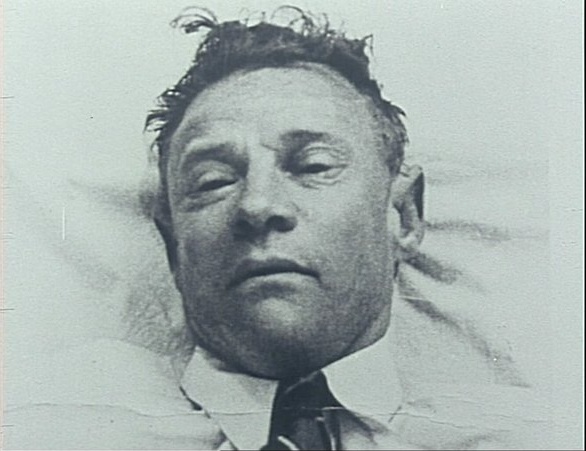
In
1948 the body of a man was found on Somerton beach in Adelaide,
Australia. The man was never identified. Police found a suitcase which
they believed was his containing clothing in which all but three items
had their name tags removed. The
name on the remaining items pointed them to a man who was later
identified as not being the dead man. A small note in the man’s pocket
said “taman shud” which is the last line of the Rubaiyat of Omar
Khayyam. It had been cut from a book. A doctor seeing the note on the TV
contacted police to say that the book had appeared in the backseat of
his unlocked car. It was the copy that had had the note removed. In the
back of the book were coded markings which have not been able to be deciphered as yet:
MRGOABABD
MTBIMPANETP
MLIABOAIAQC
ITTMTSAMSTGAB
A name in the front of the book led police to a woman who said she had
given it to a man named Boxall during the Second World War. Upon seeing a
plaster cast of the dead man she identified him as Boxall. This
appeared to solve the mystery of who the man was, until Boxall was
discovered alive with his copy of the book undamaged. Coincidentally the
woman who identified the man lived in Glenelg – the last town visited
by the dead man before he travelled by bus to his final destination. The
woman asked police not to record her name as she was married and wanted
to avoid scandal – they foolishly complied and her identity is now also
unknown. This is considered to be one of Australia’s most profound
mysteries. Wikipedia has extensive information on this fascinating case
here.
Most murders aren’t that difficult to solve. The husband did it. The
wife did it. The boyfriend did it, or the ex-boyfriend did. The crimes
fit a pattern, the motives are generally clear.
Of course, there are always a handful of cases that don’t fit the
template, where the killer is a stranger or the reason for the killing
is bizarre. It’s fair to say, however, that nowadays the authorities
usually have something to go on. Thanks in part to advances such as DNA
technology, the police are seldom baffled anymore.
They certainly were baffled, though, in Adelaide, the capital of South
Australia, in December 1948. And the only thing that seems to have
changed since then is that a story that began simply—with the discovery
of a body on the beach on the first day of that southern summer—has
bec0me ever more mysterious. In fact, this case (which remains,
theoretically at least, an active investigation) is so opaque that we
still do not know the victim’s identity, have no real idea what killed
him, and cannot even be certain whether his death was murder or suicide.
Taman Shud Case - The Body on Somerton Beach
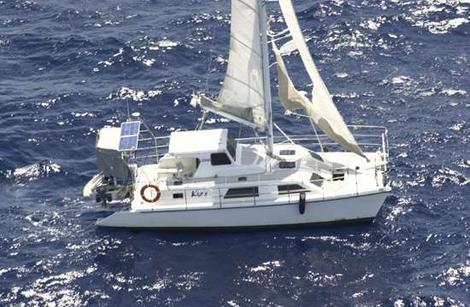
In 2007, the 12-metre catamaran, the Kaz II, was discovered unmanned off
the coast of Queensland, northeast Australia in April. The yacht, which
had left Airlie Beach on Sunday 15 April, was spotted about 80 nautical
miles (150 km) off Townsville, near the outer Great Barrier Reef on the
following Wednesday. When boarded on Friday, the engine was running, a
laptop was running, the radio and GPS were working and a meal was set to
eat, but the three-man crew were not on board. All the sails were up
but one was badly shredded, while three life jackets
and survival equipment, including an emergency beacon, were found on
board. Investigators recovered a video recording that showed footage
taken by the crew shortly before their disappearance. The footage showed
nothing abnormal.
The Katz II was (or is) a private yacht whose 2007 crew met with a
similar end to the crew of the Mary Celeste. That is to say, no one is
quite sure what happened to them. The story is slightly less suspicious
than the story of the Mary Celeste, given that there were only three men
on board the Katz II. Nevertheless, the lack of clues, disappearance of
the crew and discover the boat are very much the same, save the more
modern equipment on board the Katz II.
The Katz II was found adrift near the Great Barrier Reef on April 18,
2007. The Katz and three friends -- all experienced -- left Airlie Beach
only three days earlier. Upon boarding the vessel, authorities found
food set out on the table, equipment still turned on, the yacht's entire store of life jackets, the engine running and a laptop still turned on. There was even a coffee mug still on deck. The only thing that was not there were people and there was no sign of them.
A rescue effort went underway immediately. However, it appeared, judging
by a video made by the men and other clues, that the men had gone
missing the very evening after they left. That meant nearly three days
in the open ocean without life vests, if they had fallen overboard. That
meant three days lead, if they met with foul play. They were never
found.
Katz II - Unexplained Mystery of Ghost Yacht
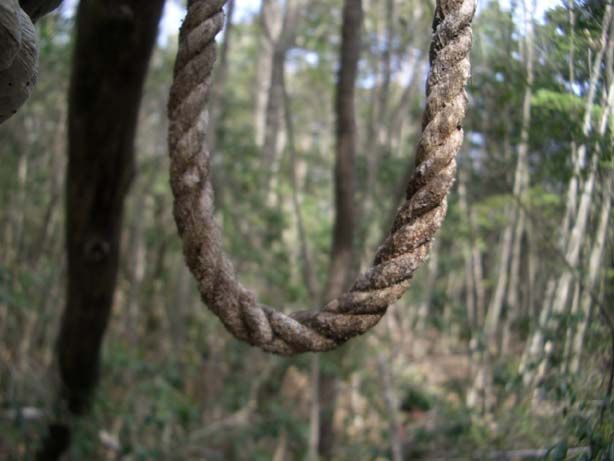
Called "the perfect place to die," the Aokigahara forest has the
unfortunate distinction as the world's second most popular place to take
one's life. (The first is the Golden Gate
Bridge.) Since the 1950s, Japanese businessmen have wandered in, and at
least 500 of them haven't wandered out, at an increasing rate of
between 10 and 30 per year. Recently these numbers have increased even
more, with a record 78 suicides in 2002.
Japanese spiritualists believe that the suicides committed in the forest
have permeated Aokigahara's trees, generating paranormal activity and
preventing many who enter from escaping the forest's depths.
Complicating matters further is the common experience of compasses being rendered useless by the rich deposits of magnetic iron in the area's volcanic soil.
Due to the vastness of the forest, desperate visitors are unlikely to
encounter anyone once inside the so-called "Sea of Trees," so the police
have mounted signs reading "Your life is a precious gift from your parents," and "Please consult the police before you decide to die!" on trees throughout.
Contemporary news outlets noted the recent spike in suicides in the forest,
blamed more on Japan’s economic downturn than on the romantic ending of
Seicho Matsumoto’s novel Kuroi Jukai, which revitalized the so-called
Suicide Forest’s popularity among those determined to take their final
walk. (The novel culminates in Aokigahara as the characters are driven
to joint-suicide.)
Unexplained Mysteries - Creepy Places - Aokigahara Suicide Forest
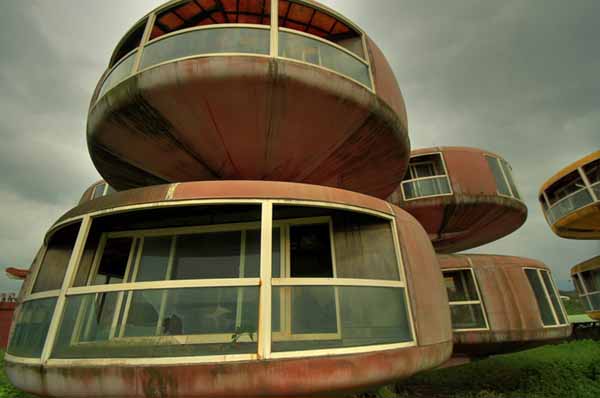
What
do you get when you cross a series of abandoned, rusting, futuristic
UFO-shaped buildings with a series of mysterious deaths covered up by
the government? How about the ghost town-slash-tourist resort of San
Zhi, located just outside Taipei and inside your worst nightmares.
The exclusive San Zhi resort in Taiwan was supposed to be the destination for bored, rich folk
who always wondered what it would be like to live inside an over-sized
hockey puck. Construction of Pod City started around the 80s but was
quickly shut down after a series of mysterious on-site fatal accidents... or it could have been due to Godzilla
attacks for all we know. There is actually very little official
information on San Zhi. We can't even confirm how many people died there
or if they screamed something about eyeless children eating their
souls. The whole thing is shrouded in secrecy.
Currently, most of the information on the complex comes from the locals
who--what a surprise--refuse to go near the damn thing. And thus the
abandoned 90 pods just stand there, waiting for anyone foolish enough to
wander in.
Off the northern coast of the country, on the outskirts of Taipei,
Taiwan is an abandoned housing project consisting of podular housing …
The area is called San Zhi. There are no named architects since the
whole site was commissioned by the government and several local firms.
They were trying to create a posh luxurious vacation spot for the
affluent and rich streaming out of Taipei. Now this is where things get
weird.
The local papers say there were numerous accidents during its
construction, and as news spread to the urbanites of the island state,
nobody wanted to vacation there, much less visit. Locals say the area is
now haunted by those who died in vain and because they are not
remembered, they linger there unable to pass on. These are only rumors
as far as i can tell… This explains one possibility why the area was
abandoned. If the site is haunted, no amount of redevelopment is going
to bring the masses to that spot. Even demolishing it is out of the
question because destroying the homes of spirits and lost souls is a
HUGE no-no in Asian culture.
Creepy Places - San Zhi Resort
One of the most influential books in the horror genre is Bram Stoker's 1897 novel Dracula. Stoker, who was a manager of
the world-renowned Lyceum Theatre in London, supplemented his income by
writing stories. His books include The Lair of the White Worm, The
Jewel of Seven Stars, and The Mystery of the Sea. However, it is his
narrative about the vampire Count from Romania who invaded London for
which th
e Irish author is most well remembered.
Stoker often researched his subjects carefully and included descriptions of real places and people in his stories. Dracula
is no exception. Stoker was inspired by folktales from Eastern Europe
about vampires and incorporated many of these legends into the novel. He
had almost completed his book under the original title of The Un-Dead
when he came across a historical figure that changed both the label of
the book and the name of the main character. The figure was a 15th
century Prince of Wallachia named Vlad III. Because his father was a
member of the Order of the Dragon and had taken the name Dracul, Vlad was often referred to as "the son of Dracul" which in Latin was Dracula. Because of his preferred method executing his enemies, however, he was commonly known as "Vlad the Impaler."
The Impaler Prince
Vlad III was born late in the year 1431 in the Transylvanian city of Sighisoara.
His father, Vlad II, was a nobleman living in exile. The same year Vlad
II was born his father was inducted into the secretive "Order of the Dragon."
The order, founded in 1410 by Sigismund the Holy Roman Emperor,
demanded the members defend Christianity and resist the Ottoman Turks
who were Muslims.
In 1436 Vlad's father took over the throne of Wallachia, a region of
what is now Southern Romania. He was removed from power six years later
by rivals and decided the best way to get
the throne back was to switch sides, betray his oath to the order, and
ally himself with the Ottoman Sultan. As proof of his new loyalty,
Vlad's father sent two of his sons, Vlad III and his younger brother
Radu, to the court of the Sultan to be held hostage. Radu (known as
"Radu the handsome") did well at the court and eventually converted to
Islam. Vlad, however, was a problem child. He didn't get along with his
tutors and trainers and was angry at his father for favoring his older
brother, Mircea, and betraying his pledge to the Order of the Dragon
(into which Vlad III had also been inducted at age 5). He was also angry
at his younger brother for leaving Christianity. His bad attitude
earned him beatings, imprisonment and this gave him a hatred for the
Ottoman Turks.
Eventually, Dracula was released on the promise
of good behavior and continued his education at the Court, learning how
to handle weapons and ride horses as well as getting an education on
subjects like religion and logic. He also became fluent in several
languages.
Read More about Real Dracula
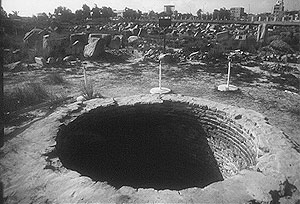
Mel's
Hole is a supposed geographic anomaly discovered by Mel Waters on his
land near Ellensburg, Washington. Waters claimed that he lived in or
near Manastash Ridge, Washington, about nine miles due west of
Ellensburg, though later investigation revealed that no such person was
listed as a resident. According to Waters, the hole has paranormal
properties, including a possibly infinite depth and the ability to
restore dead animals to life.
The first references to the hole were made in a series of interviews with Waters, made by Art Bell on the American radio show Coast to Coast AM (which focuses on conspiracy theories
and the paranormal). Waters initially appeared on Coast to Coast AM on
February 21, 1997. He subsequently appeared on February 24, 1997, April
2000 and January 29, 2002. His most recent appearance on the show was on
December 20, 2002.
Description
While speaking on Coast to Coast AM, Waters related several stories
about the hole and its properties. He also claimed that he had
discovered that the hole was in excess of 15 miles (24 kilometers) deep,
which he figured out by spooling out 18 reels of 20lb test fishing
line, tied end on end, into the hole. Waters claims that he attached a
"triangular, one-pound, standard lead fishing weight" to the end of the fishing line.
Waters also told a story of a local man who dropped the remains of his
deceased dog's body down the hole. Later, the man saw his dog while out
hunting and attempted to call it; however, it appeared to belong to
another hunter. Waters also speculated that the hole's properties might
be tied to some cosmological events, including unspecified alignments of
the moon.
On the September 18, 2008, edition of Coast to Coast AM, guest Red Elk,
an intertribal medicine man, recounted the time he visited Mel's hole.
He recounted the hole as "around 9 ft. in circumference and somewhere
between 24–28 (27.5?) miles deep" and said that it was a blow hole for
Mount Rainier.
Location
Waters has never revealed the exact location of the hole. It is possible
that it is located in a region removed from publicly available
satellite images due to the nearby Yakima Training Center. Despite this,
several people have claimed to have found the hole.\ Just before the
tenth anniversary of Mel's first appearance on Coast to Coast AM, the
moderator of the Mel's Hole website declared
the search for the hole was a dead end, and that it would likely never
be proven to exist unless Mel came forward with evidence of its
location.






